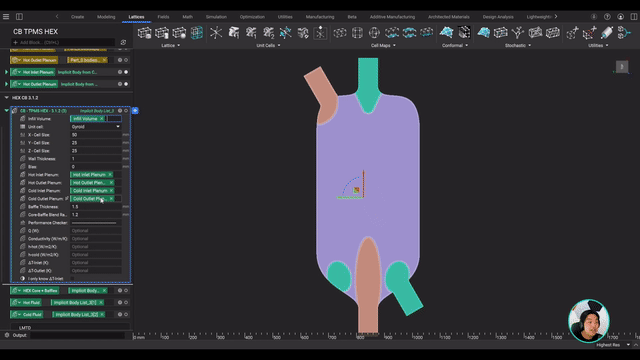What is design for additive manufacturing?
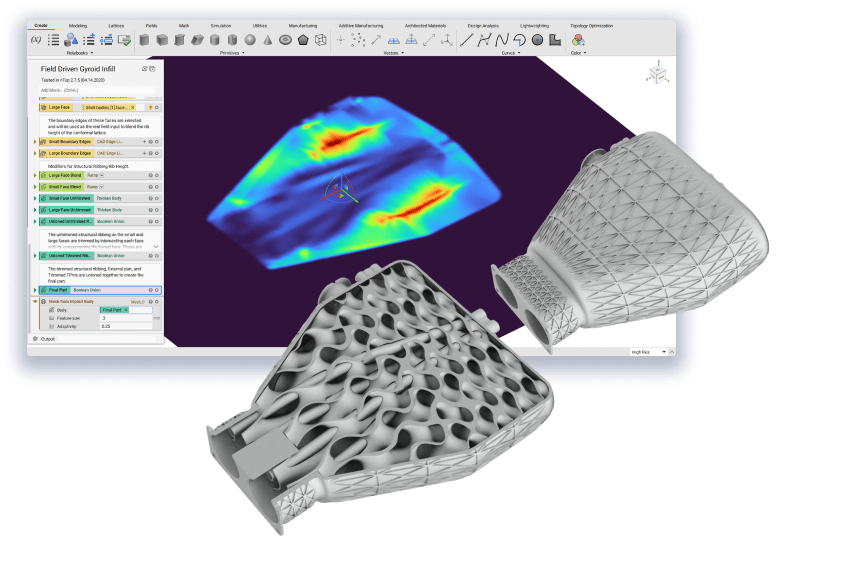
Written by nTop
Published on May 24, 2022
Understanding Design for Additive Manufacturing is essential if you use 3D printing anywhere in your production process. But where should you begin? This guide explains the basics of DfAM and introduces the intermediate and advanced concepts you need to succeed.
With Additive Manufacturing (AM), you can design parts and products that are lighter, higher-performing, and potentially cheaper to produce than their traditionally manufactured counterparts.
AM products can also be mass-customized to fit the physiology or preferences of their end-user, optimized for performance, reduce material wastage, simplify the supply chain, and (almost as a by-product) have an aesthetically-pleasing organic appearance. If you are considering incorporating a 3D printing process at any point during production, then it is essential to have a good understanding of the basic Design for Additive Manufacturing (DfAM) principles.
This article will guide you through the various concepts, skills, design methods, and best practices used in state-of-the-art Design for Additive Manufacturing.
What is DfAM?
Design for Additive Manufacturing (DfAM) is the methodology of creating, optimizing, or adapting the form and function of a part, assembly, or product to take full advantage of the benefits of additive manufacturing processes.
DfAM is a complex topic and a hot research area. While the basic concepts are easy to understand, their implementation can be challenging to master. The state-of-the-art and best practices are constantly evolving as the capabilities of additive technologies (and engineering design software) continue to advance.

The result of effective DfAM processes are products that surpass the performance of their traditionally manufactured counterparts.
Additive manufacturing technologies give you enormous design freedom. By applying proper design rules, you can minimize the risk of errors occurring. At its core, DfAM centers around exploiting a few key traits unique to 3D printing.
Increased complexity does not equal increased cost. This benefit gives a considerable advantage over traditional manufacturing technologies for design optimization.
The total cost of production does not change significantly for larger volumes. This trait means that producing slight variations of similar designs costs approximately the same as making many identical parts, creating opportunities for mass customization and tooling.
Additive manufacturing is a digital manufacturing process. The implication is that additive manufacturing technology pairs perfectly with advanced engineering design tools for optimization and automation.
The 3 levels of DfAM
Depending on your stage in the product development process and your familiarity with the technology, there are three levels of DfAM:
- At a basic level, DfAM addresses fundamental manufacturing considerations and answers questions, such as “will it print?”
- At an intermediate level, you start to consider ways to improve the functional performance of the system by taking advantage of some unique capabilities of AM.
- At an advanced level, you focus on managing the complexities of moving a product from the proof-of-concept phase to full-scale production.
Basics principles of DfAM
At the most basic level, the goal of Design for Additive Manufacturing is to ensure that parts will be manufactured successfully.
Engineers often have to adapt existing parts to make them suitable for additive manufacturing. There will always be a level of compromise here, but with some clever adjustments and careful selection of the best material and process for the job, you can often achieve a good result.
If you understand the design guidelines of traditional manufacturing methods (such as injection molding or CNC machining), then rules around minimum wall thickness or hole size and material shrinkage should sound familiar. However, some additional design considerations, like part orientation, overhangs, and layer height, are unique to 3D printing.
To understand the basic concepts of DfAM, it is helpful to mentally visualize a design as thousand of individual cross-sections or slices. Every additive manufacturing system builds up parts layer-by-layer.
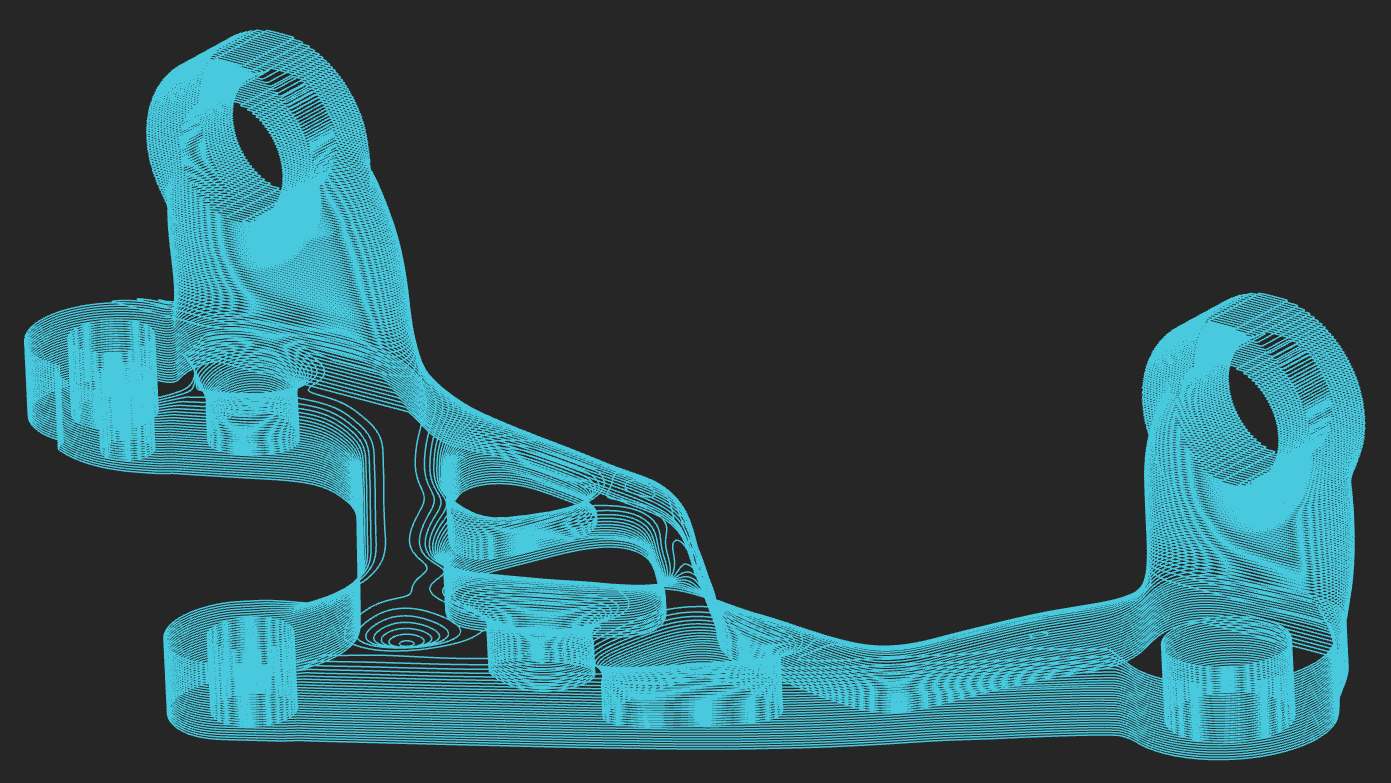
AM parts are built layer by layer. Visualizing your designs as slices can help you understand the fundamentals of DfAM.
Useful resources
You should keep in mind that every additive manufacturing process comes with its unique strengths and limitations. There are many excellent online guides that you can use as a reference when designing for a specific 3D printing process. Here is a selection of some of the best:
- For thermoplastic parts with SLS 3D printing
- For resin parts with SLA or DLP 3D printing
- For metal parts using DMLS or SLM 3D printing
Another great resource to learn more about the design consideration of a specific additive manufacturing process or system are their machine operators. Technicians often have a very high level of expertise regarding their machines, so it is always worth asking for advice on your design before committing to a print.
Core Design for Additive Manufacturing techniques
If you want to unlock the power of additive manufacturing, you should consider DfAM right from the start of the design phase.
In the past, 3D printing was considered only a rapid prototyping solution or an alternative method to producing spare parts without significantly altering the geometry. Today, additive manufacturing has matured to the point where it’s used to produce critical parts that fulfill even the most demanding engineering requirements. This level of maturity is only possible if you take advantage of the core benefits of the technology.
There are several approaches that an engineer skilled in DfAM might use to take advantage of the unique capabilities of AM production. Sometimes these are used to improve the ergonomics or aesthetics of a product, which is common in consumer goods. Other approaches can elevate the performance and function of a design in more high-tech industries, such as aerospace.
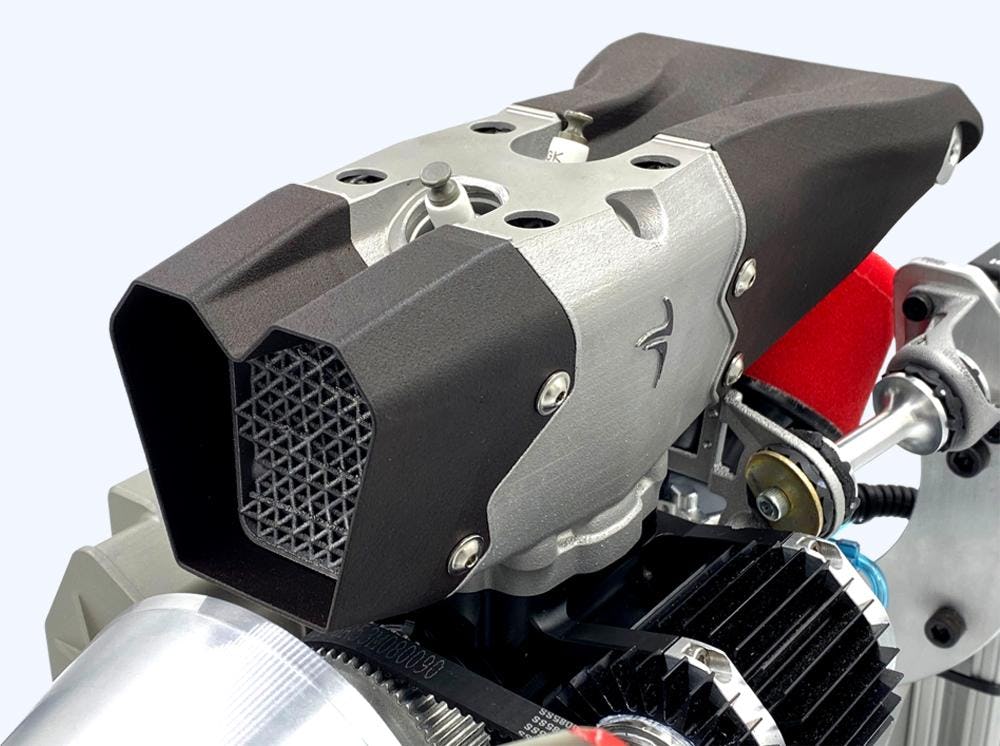
Cobra Aero completely reimagined the UAV drone engine cylinder taking advantage of the benefits of additive manufacturing.
Part consolidation
3D printing opens the door to manufacturing more complex topologies than would be possible using traditional means. It is often feasible (and highly cost-effective) to simplify assemblies by combining multiple components into one part.
Identifying opportunities for part consolidation can be challenging but well worth the effort when you consider the benefits. Part consolidation can lead to:
- Weight reduction by eliminating the need for fasteners
- Reduced assembly and quality control costs
- Increased reliability by minimizing the number of potential points of failure
Assembly consolidation also forces you to think of your design on a systems level. In practice, many components were designed in a certain way due to manufacturing constraints or simply to fit in the available space. By going back to the basic engineering design requirements, you can design components with increased functionality.
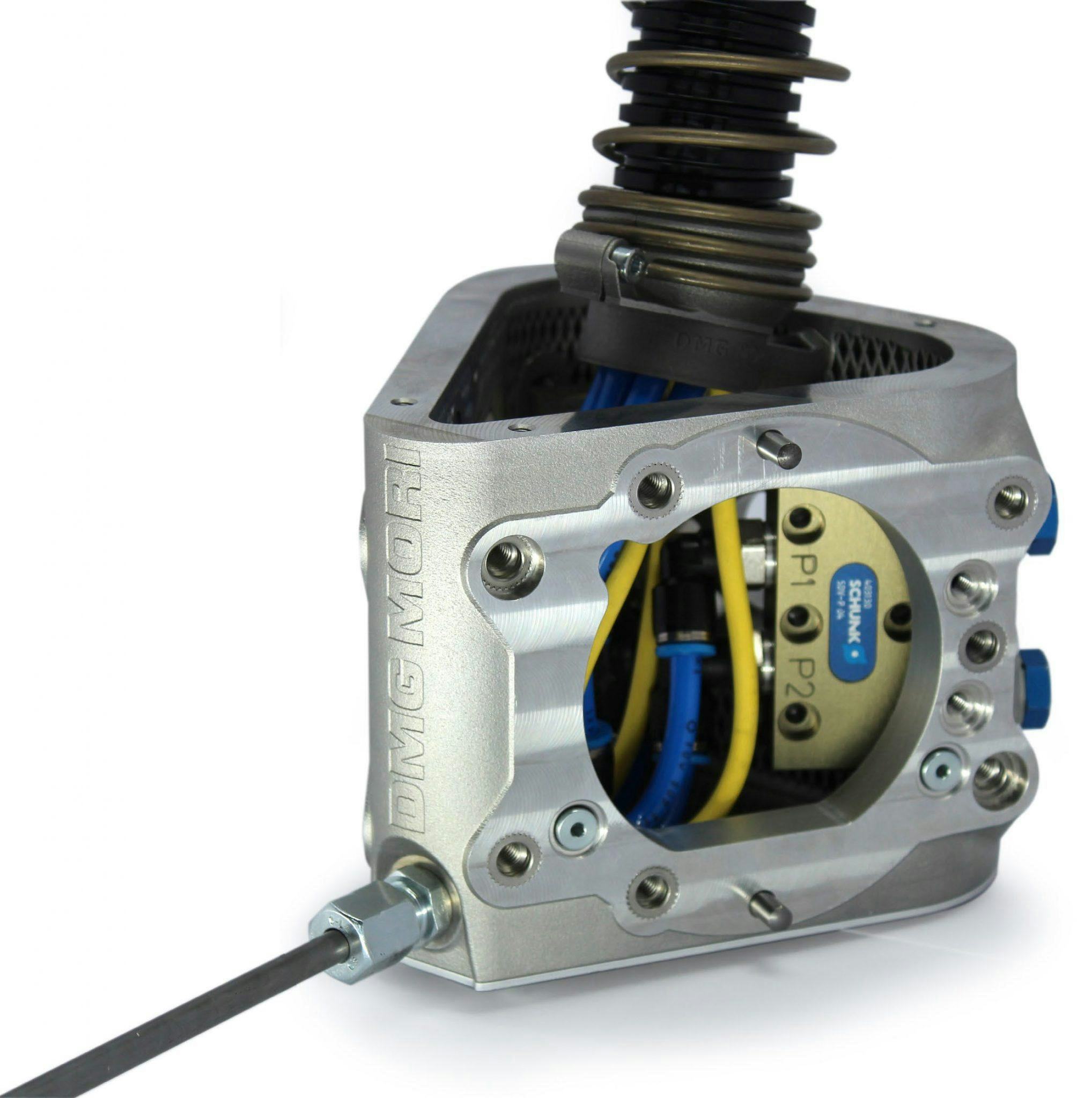
DMG MORI reduced the part count of the head that holds the end-of-arm-tooling of their industrial robotic system by 60% while reducing its weight by 62%.
Architected materials
Architected materials are structures with a tailored mechanical, biological, thermal, or electromagnetic response. In practice, architected materials are created by closely controlling and manipulating the properties of lattice structures, surface textures, or other repeated patterns to create highly customizable and digital metamaterials.
Today, the most common use case of architected materials is 3D printed foam. These customizable foam replacements are becoming increasingly common in sports equipment, prosthetic devices, and automotive seats.
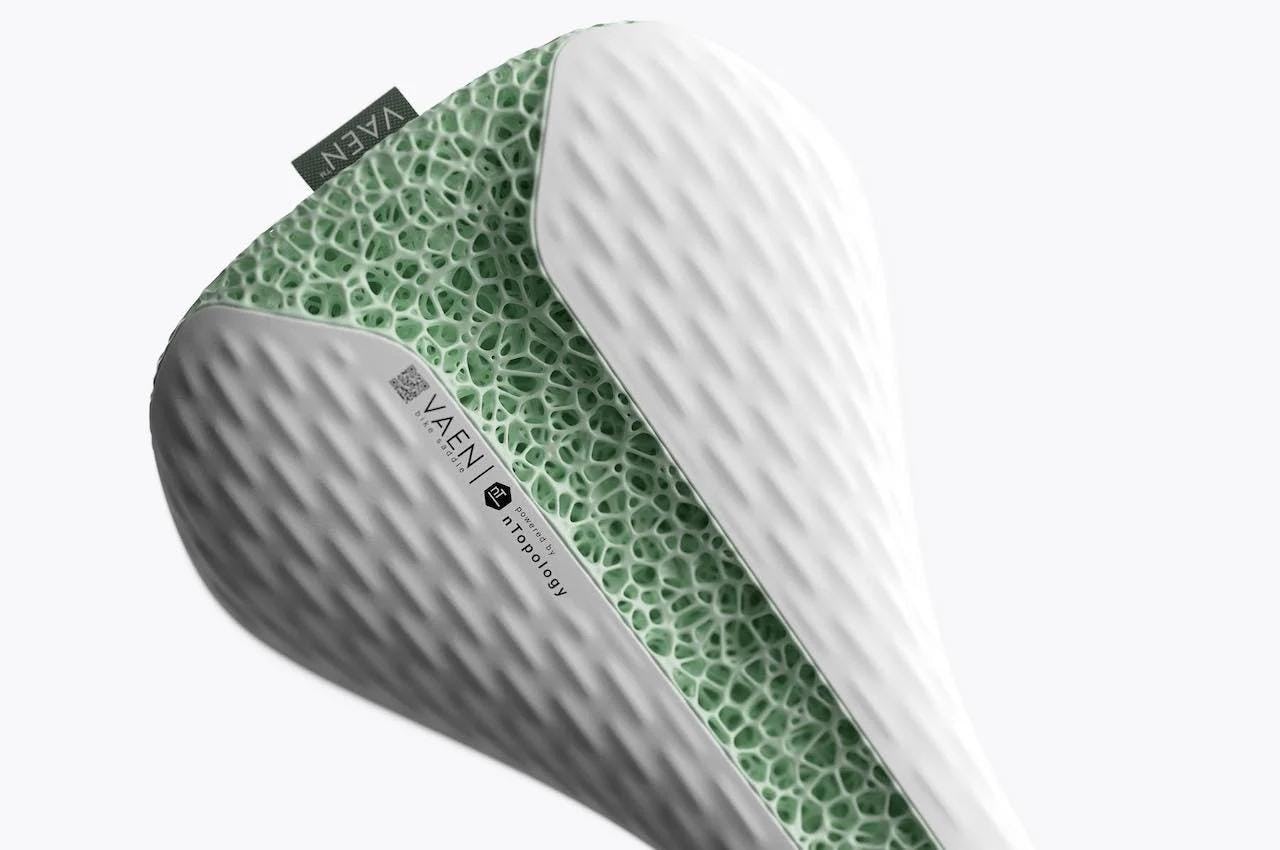
Bike saddle concept featuring a 3D printed foam for cushioning designed by VAEN. The properties of this Voronoi lattice can be adjusted to increase or decrease its stiffness.
Another core application of architected materials is the development of medical implants that feature lattice structures that promote bone growth. Architected materials can also be used in lightweighting applications to create targeted mechanical properties or mimic the natural world by applying biomimetics principles.
Generative design
Generative design is a design methodology that uses computational algorithms to generate high-performance geometry based on specific requirements.
Every generative design model has three key components: geometry generation, design evaluation, and automated iteration loops.
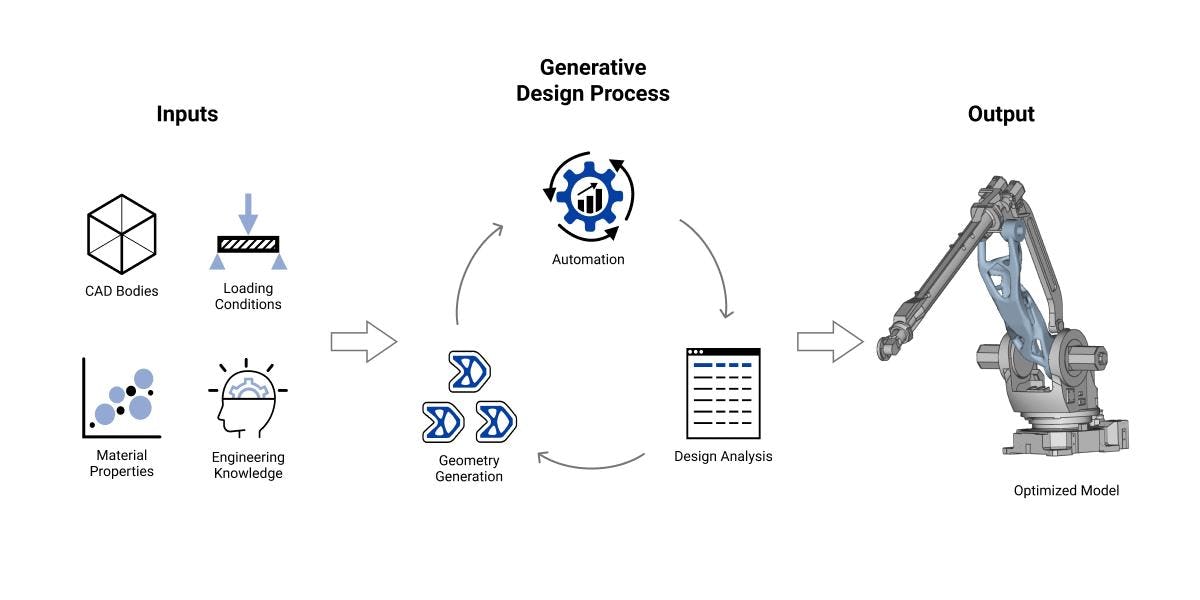
The basic ideas behind generative design may not sound very different from the traditional iterative engineering design process. However, generative design is the next frontier in mechanical engineering product development because it flips the paradigm of first creating and then evaluating the performance of a design candidate.
Topology optimization
Topology optimization is a computational design process that will seek to produce an efficient material distribution to solve a particular problem based on a set of load cases, material properties, and boundary conditions.
Topology Optimization is a type of Generative Design. It is often used to produce highly efficient parts at resisting mechanical forces while remaining as lightweight as possible. Additive manufacturing is well suited to producing the outcomes, as the results are often organic-looking and challenging to make with other manufacturing methods.
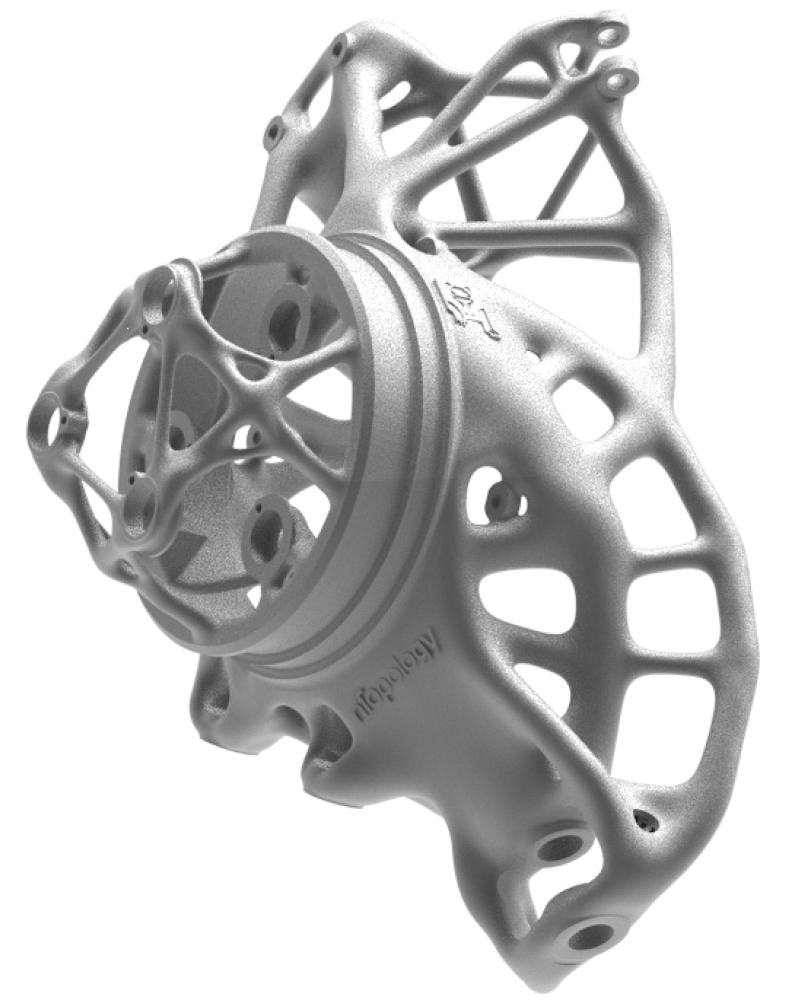
Lightweight and organic-looking topology optimized automotive upright bracket designed by Lions Racing Team e.V.
Advanced additive design considerations
Although the design methods listed in the previous section form the critical tools in a DfAM engineer's arsenal, a few more steps are needed to ensure that additive production is viable from an economic standpoint.
Design to minimize cost
Support removal is a necessary post-processing step for many AM processes. It is not a massive issue for production runs of only a few components, as the added post-processing cost is small compared to the overall design and manufacture cost.
However, if you are going past the prototyping stage and move to produce parts in the hundreds or thousands, careful design to minimize support structures can lead to significant cost savings in touch-labor and quality control—especially for metal additive manufacturing. The way to achieve this is by creating self supporting structures or by following the shell and infill approach.
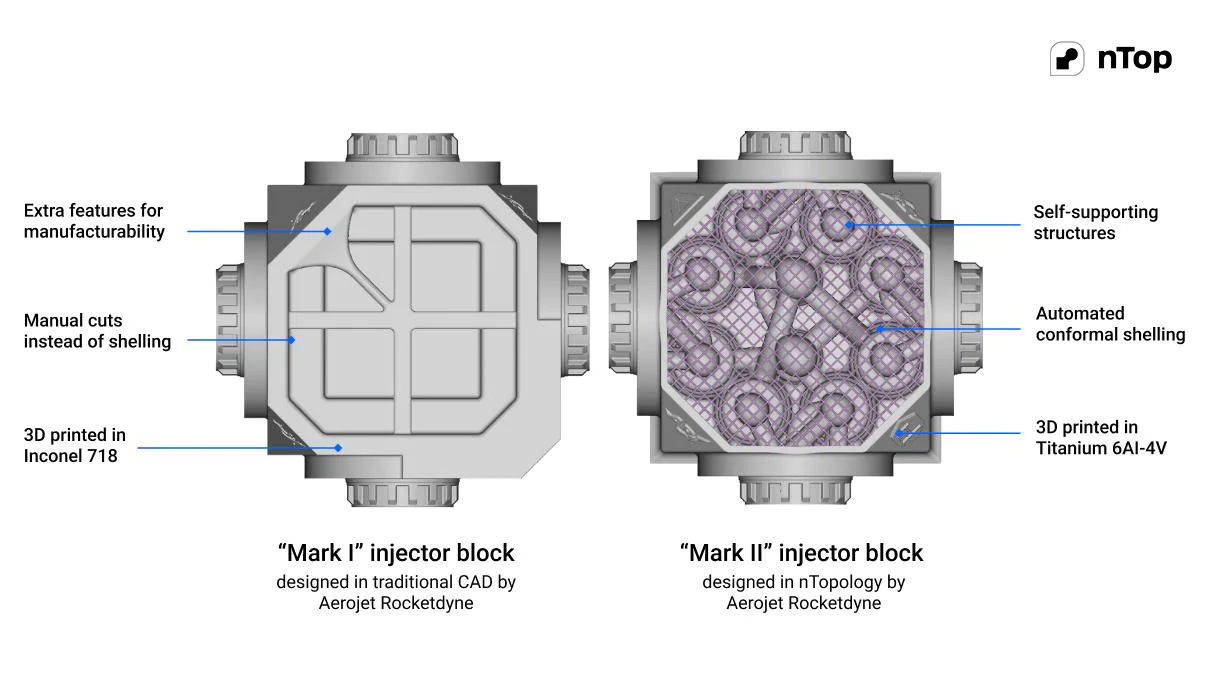
Aerojet Rocketdyne used an internal self supporting lattice structure to ensure that the production of Mark II of their spacecraft quad thruster injector block was economically viable.
Polymer-based powder bed fusion processes generally need no support, which is one of the reasons these processes are often considered an alternative to plastic injection molding, especially when combined with the following technique.
Design automation for mass customization
One of the key benefits of additive manufacturing is that producing one-off, unique design is economically viable. However, even though the cost of production is low, the cost of engineering these complex parts is not.
Setting up automated design processes that can reduce time consuming tasks from hours or days down to minutes is now a powerful possibility.
Design automation finds applications in designing personalized medical devices, such as implants, prostheses, and orthoses. The base design can be customized using a patient's specific anatomy.

The sockets of these 3D printed prosthetic devices designed by LifeNabled were customized to fit the anatomy of each patient based on 3D scan data.
The same principles can be applied to automatically process families of parts. For example, using design automation, you can automatically run a topology optimization to lightweight 30 components in a single day instead of 30 days. Similarly, you can quickly generate 3D printed fixtures to support conventional manufacturing processes with a few clicks.
Design for hybrid advanced manufacturing
Additive manufacturing is a powerful approach, but sometimes by combining it with traditional methods such as casting or injection molding, new and exciting opportunities present themselves.
For example, 3D printed injection molding tools with conformal cooling channels or other internal structures can shorten cycle times and increase productivity. You can also overcome the size limitations of metal AM technologies by 3D printing a sand pattern and then casting an alloy of your choice.
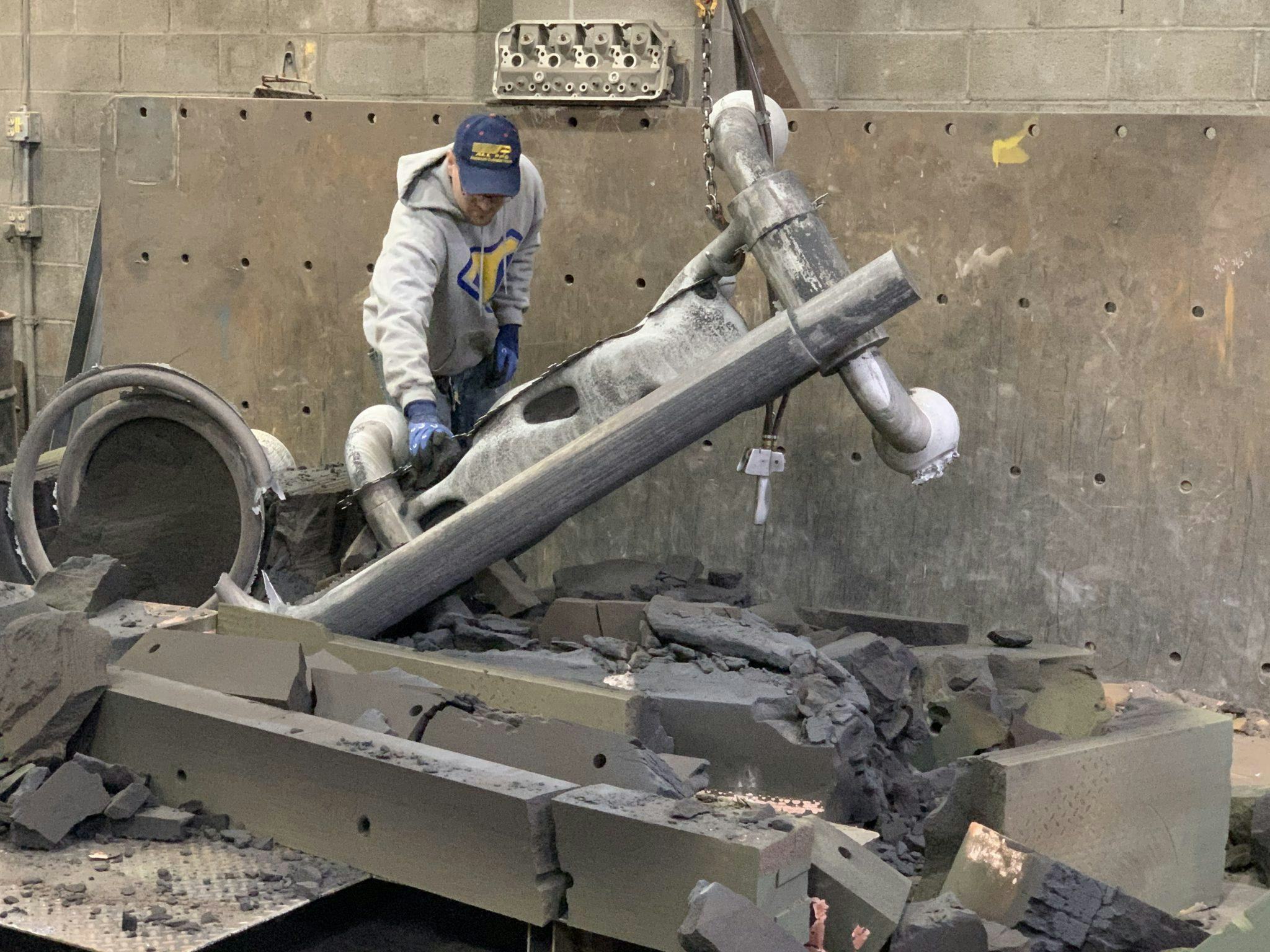
A 3D printed sand casting mold was used to manufacture this 1-meter long topology optimized robotic arm. Its production would be impossible with traditional processes for mold-making and economically prohibitive using metal additive manufacturing technologies.
Software tools for Design for Additive Manufacturing
If you’ve ever tried to generate some of the more complex geometric shapes necessary for the core and advanced DfAM techniques using traditional CAD programs, you have probably faced many issues.
nTop is an advanced design engineering software based on implicit modeling that helps you overcome many of the bottlenecks associated with the geometric complexity. nTop's field-driven design capabilities give you granular control over every aspect of your additive designs. The ability to create reusable workflows will also save you time if you want to automate repetitive tasks.


nTop
nTop (formerly nTopology) was founded in 2015 with the belief that engineers’ ability to innovate shouldn’t be limited by their design software. Built on proprietary technologies that upend the constraints of traditional CAD software while integrating seamlessly into existing processes, nTop allows designers in every industry to create complex geometries, optimize instantaneously, and automate workflows to develop breakthrough 3D-printed parts in record time.
Related content
- VIDEO
Sneak peek into the nTop + Autodesk Fusion 360 integration
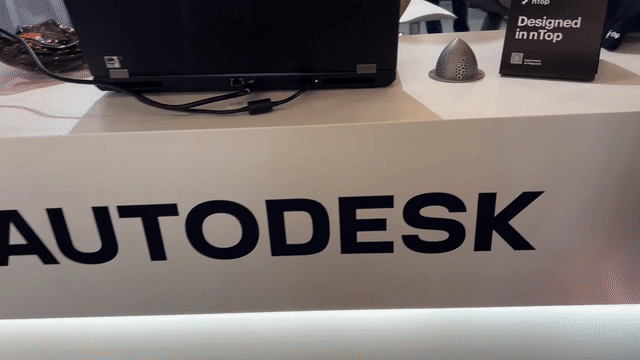
- ARTICLE
Optimizing thermal management with conformal cooling to extend operational life
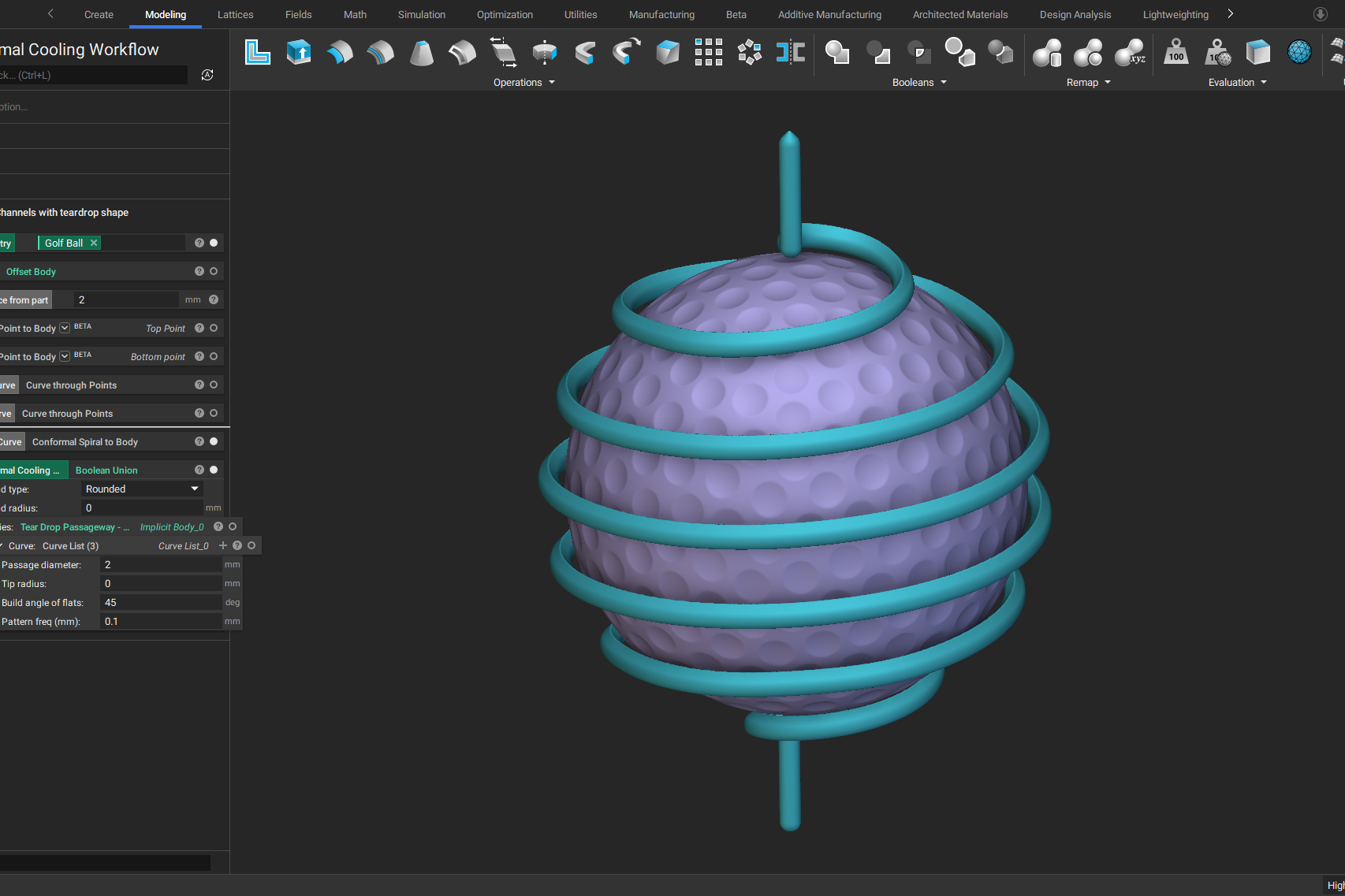
- ARTICLE
Advancing structural performance of aerospace heat exchangers
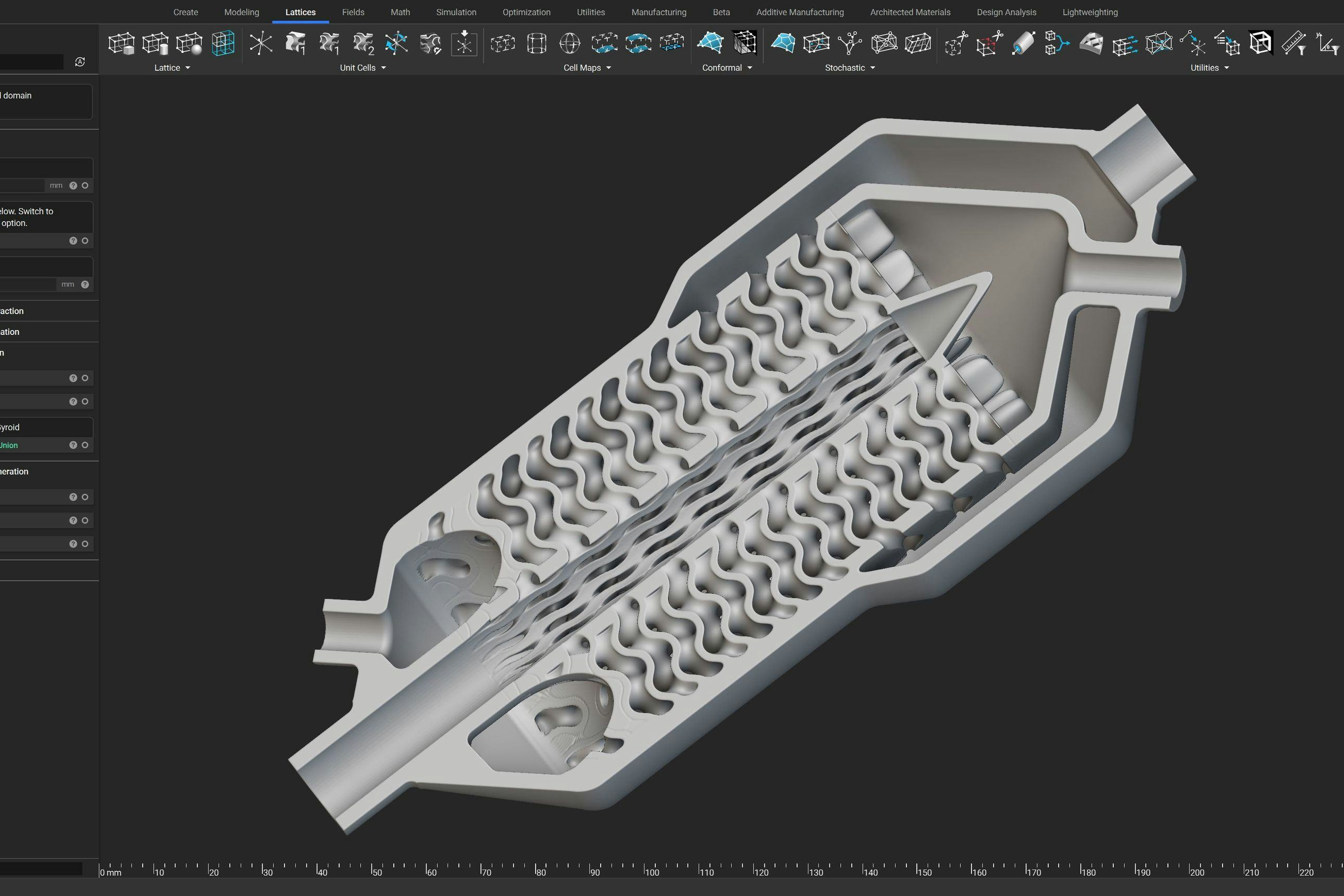
- VIDEO
Design a spooky Halloween candy bowl in nTop
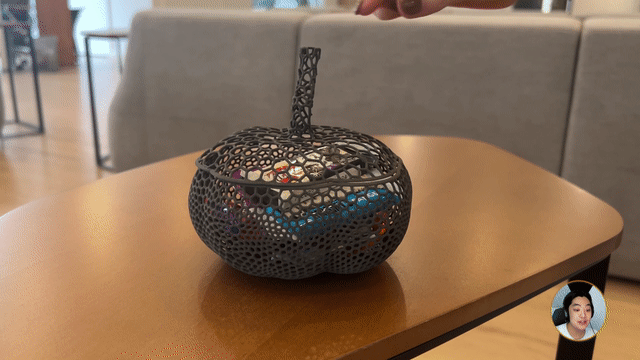
- VIDEO
5 reasons why you should use nTop to create heat exchangers
